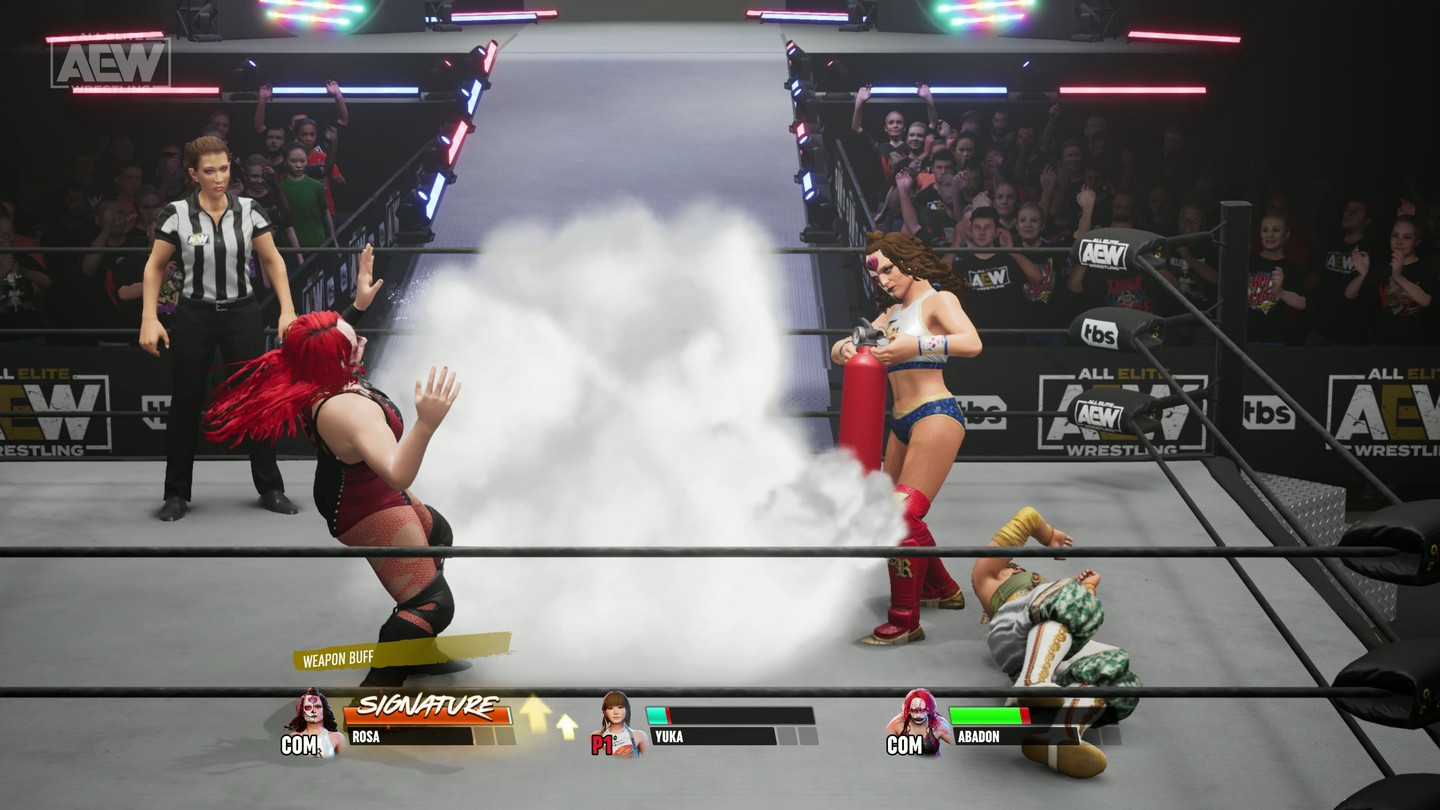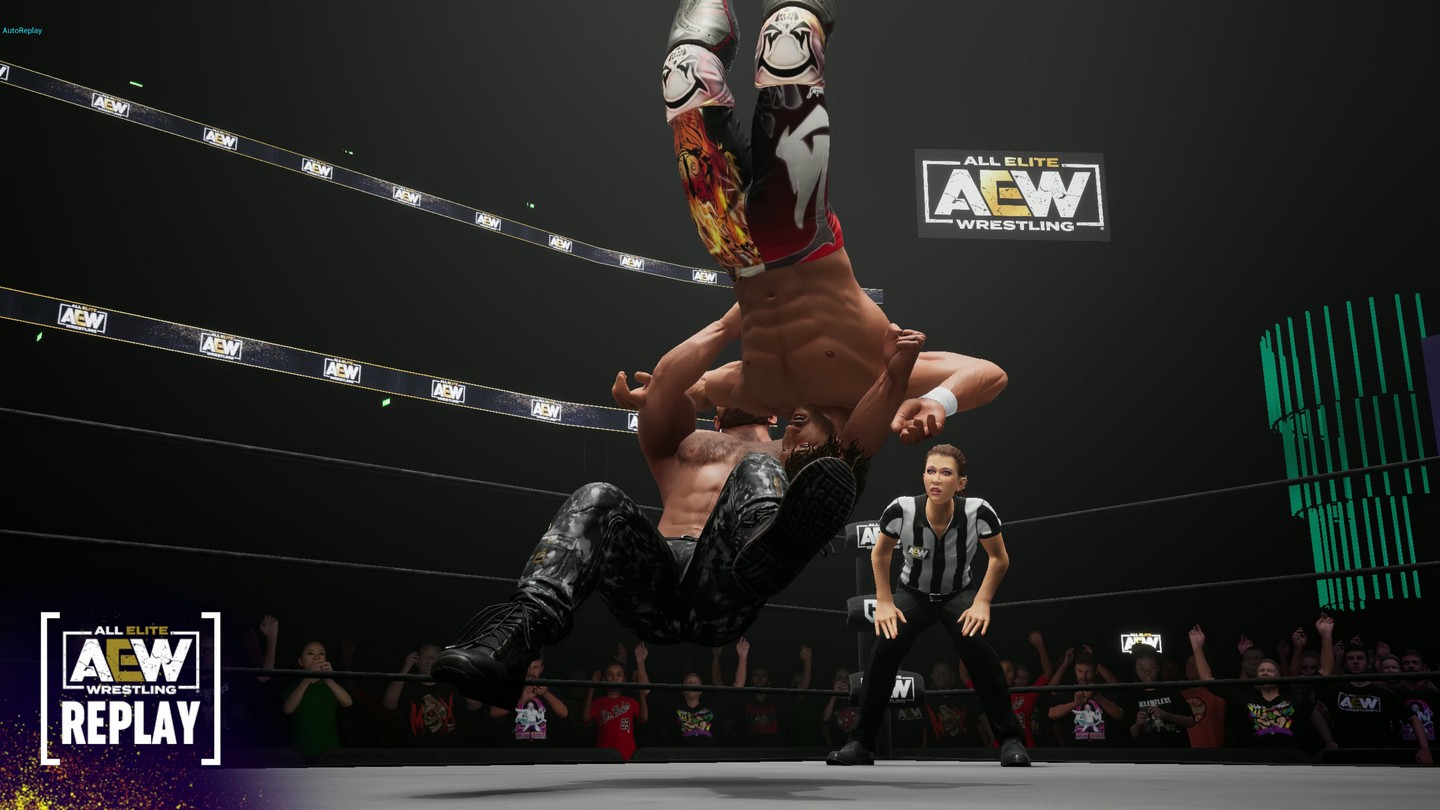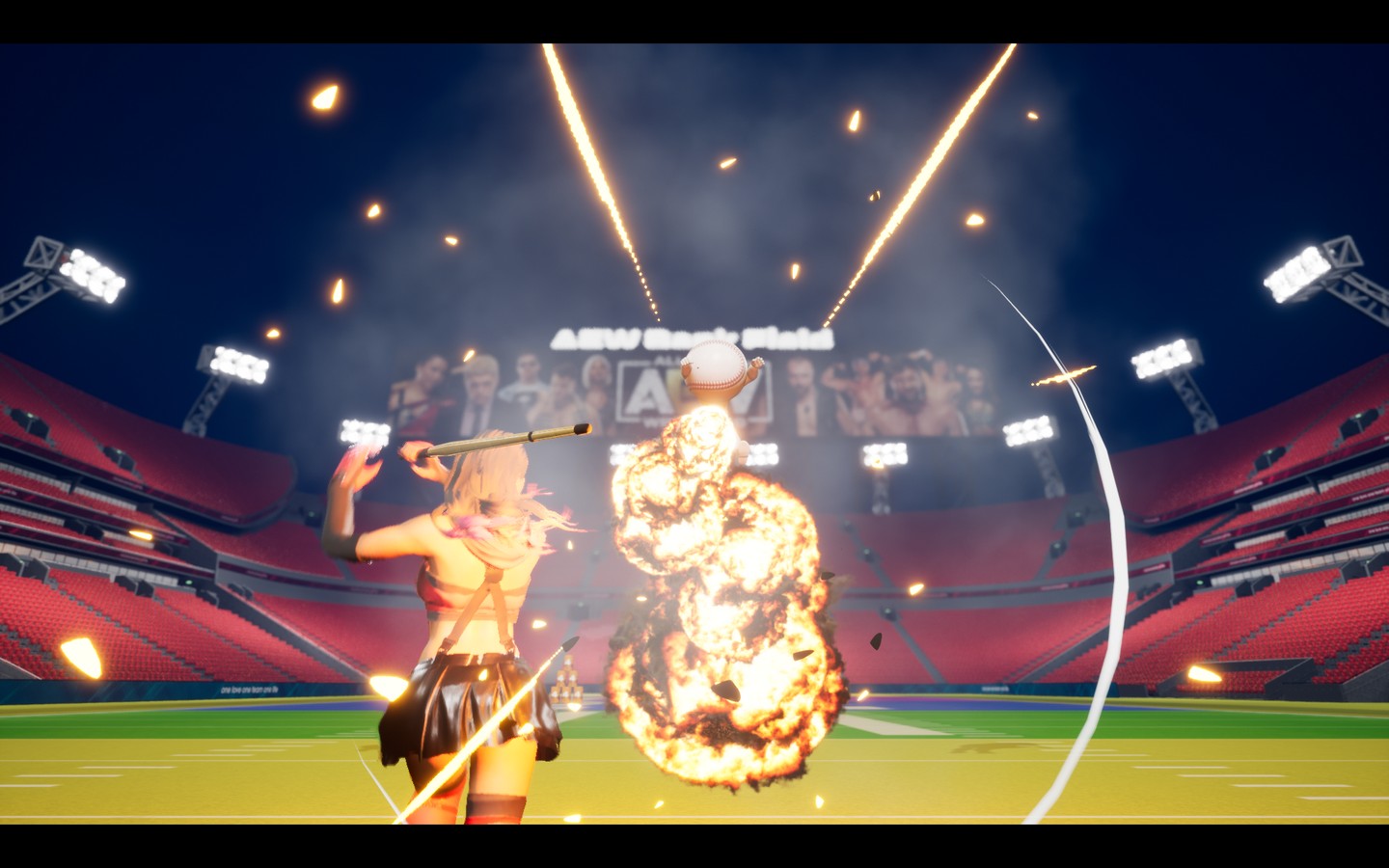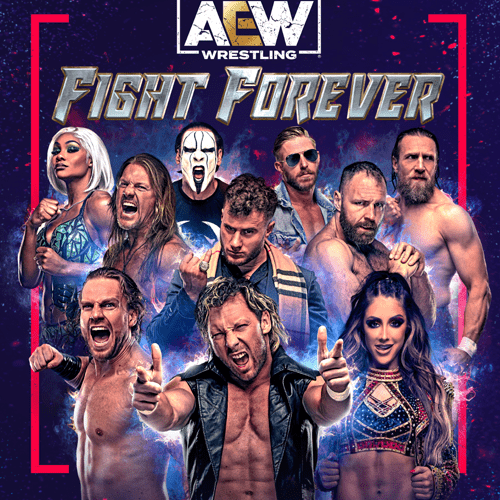A Revolution that doesn’t quite hit Full Gear
All Elite Wrestling is on a roll. They are fresh off the launch of a second live weekly 2-hour show with AEW Collision, last week’s Forbidden Door PPV what was (in my humble opinion) the best wrestling show of the year, and in a couple of months they’ll host what will be either the highest or second highest attended wrestling show in the UK of all time with All-In at Wembley Stadium. Into this environment of exciting new developments in the world of wrestling, AEW Games is also launching their first console wrestling game, AEW: Fight Forever. When the promotion launched in 2019, they promised to be an alternative to the WWE in all the ways that many long dissatisfied lapsed fans of professional wrestling had longed for. Fight Forever offers the same promise. A throw back to the AKI games that were so popular on the N64 and are generally considered in the top echelon of not only the wrestling games of that era but of the entire library. Strategic, high impact, easy to learn and hard to master. Fight Forever has plenty in common with these giants of the genre and has put together a solid base to build off here, but unfortunately many of the seams of this being the first entry show through.
Mode selection is about what you would expect from a wrestling game, with one big surprise and several notable omissions. In addition to the standard expected one on one and tag match scenarios and multi-man matches you’ll find a couple of AEW exclusives here: The Casino Battle Royale and the Exploding Barbed Wire Death Match. The Casino Battle Royale functions similarly to battle royales you may be familiar with (like the WWE’s Royal Rumble match) only wrestlers come out in groups based on the suits in a deck of cards. Just like the Rumble, to win the match you must force all your opponents over the top rope and out of the ring. Unfortunately, the game is limited to 4 wrestlers on screen at a time, which is a limit on a match of this type.
The Exploding Barbed Wire Death Match is as brutal as advertised, with electrified barbed wire ropes around the ring (which will explode in sparks if a wrestler is thrown into them) and a giant explosion (or, in a hilarious reference to the real life match a small shower of sparks) at the 120 second mark. In practice, this is a very cool match type, but I do wish the time to explosion was customizable. I found 120 seconds to be way too short and it sort of ruins the drama of the match.

MSRP: $59.99
Platforms: Xbox (reviewed), PlayStation, Switch, PC
Ladder matches are featured here but are in my experience the most glitchy of the matches on offer. Ladders, while easy enough to pick up and set down, seem to give the engine fits. Clipping issues abound in ladder matches, with wrestlers clipping into and through the foreign object frequently. It also creates challenges for the AI, which (when they can’t clip through) seems to have trouble navigating around a ladder that’s in the path to a prone opponent. Most egregiously, in one ladder match I had between champ MJF and the Anxious Millennial Cowboy Hangman Adam Page, the ladder just ceased being an object that either wrestler could interact with. It still sat in the middle of the ring, but neither wrestler could climb it, pick it up, or ram their opponent into it. Thankfully, because the ladder basically had permanent no-clip turned on, I was able to set up a second ladder and use that to finish the match. These are the kind of issues that the WWE 2K series struggled with for years and has finally (mostly) eliminated with the most recent release. Hopefully time and patches will allow the Fight Forever team to make the same corrections, but out of the box this is the match type that gave me the most fits.
Unfortunately, the limitation on wrestlers in the ring means there are no Trios matches in the game (3 v 3) which is a real disappointment considering how much importance AEW has shown to trios matches over the years and the fact that they have a real-life championship division based around the match type. We’re also missing the ability to have cage matches, another staple of the genre. Hopefully we’ll get some additional match types through content updates, but out of the gate it’s a relatively bare bones selection. Entrances are limited to very brief, ramp only intros (although you do have the fun ability to play with the pyro while the entrance is going on). Another omission is commentary during matches, choosing instead to play music from the games (admittedly great) jukebox.
The actual gameplay during the matches is really where Fight Forever shines. The game, as mentioned above, takes its influence from AKI games like No Mercy, WCW vs NWO Revenge, and even the Def Jam series of fighting games. That means all the staples of those classics are on offer here, including heavy and light grapples and strikes, the ability to pause while getting up to bait your opponent into an attack, and even the strong style chest out strike block. That’s not to say there aren’t some innovations here though.
One area of evolution from those N64 games is the Skill system. Every wrestler has various skills assigned to them across three skill types: Stat Skills, Action Skills, and Passive Skills. Stat Skills are basically just what they sound like, a 0-5 rating in various attributes that impact the effectiveness of what your wrestler can do in the ring. Things like Finisher strength, how many different finisher slots you can have, how quickly you gain momentum (which allows you to do Signature and Finisher moves), and the power of your various strikes and grapples. Passive Skills are “buff” abilities that your wrestler can have based on actions taken in the ring. These boost your wrestler’s momentum in the match based on things like if you were the first to attack, if you do moves like tope’s and springboards, and if you use weapons.
The last and most impactful series of skills are the Action Skills. These give different wrestlers various actions they can perform that others may not be able to. For example, if your wrestler has the “Tope” skill they can dive to the outside. If they have the “Gimmick Infringement” skill, they can steal their opponent’s finisher. Other skills are more defensive in nature, like the “Anti-Air” skill or “Rebound Recoil Attack”. Mastering these skills not only adds a lot of variety to the way each wrestler controls in the ring but is essential to winning matches on the higher difficulty levels.

Unfortunately, the game doesn’t do a very good job of teaching you about these skills or how to use them. There is no real “tutorial” in the game, despite some brief tutorial messages that pop up as you play your first match in certain match types. While these messages introduce some basic concepts, the Skill system is buried in the pause menu under Participants -> Skill Details. There is a nice fighting game style training mode on offer here, where you practice against an AI opponent with behavior set by the player, but the game could have benefitted from a more robust tutorial system.
Most of the rest of the gameplay elements will be very familiar to veterans of the AKI games. Hold down the grapple button and push a direction for a strong grapple or tap for a light grapple. Same basic concept for strikes. Reversals and blocks/dodges are on two different buttons (which is different from the AKI games) with LB serving as the Grapple block/reversal button and RB serving as the strike block/reversal button. You can also turn on “Easy Reversals” in the menu, which allows you to reverse moves with the face buttons. Anyone going into this expecting a reversal happy experience like the WWE 2K games will be in for a shock, however. The more your momentum dips the harder it is to reverse moves (and vice versa for high momentum) so it is much more difficult to stage a comeback late in a match if you’ve been getting squashed all match. This is where mastery of your wrestlers’ skills, and knowledge of when to bail out and take a breather to build your momentum up through taunts can come in handy.
In the ring gameplay is definitely the highlight of Fight Forever, and the game is a blast to play, but it’s not without its issues. As with most wrestling games, matches against your friends are always better than matches against the computer. In this game though, that’s especially true. The AI on display here is not good. Often the computer will become confused about what to do, especially in multi-man matches and when the opponent is grounded. As I mentioned, damage is really impactful in this game, so when you’re down you’re down for a while usually. Oftentimes in this situation the opponent just doesn’t do much. They’ll walk in place, or occasionally taunt, but sometimes they just stand there like they aren’t quite sure what they should be doing. I mentioned previously the issues with Ladder Matches, but the AI seems really perplexed in these, often failing to climb the ladder even when a perfect situation presents itself. Obviously if you’re a newcomer to this type of wrestling game and you want to play on Easy difficulty the AI behavior is even worse there. Thankfully the online in the game is solid, with both ranked and casual match types, so you should never really be at a shortage of live humans to play with.
The primary single player mode in the game is called Road to Elite. True to the overall theme of Fight Forever, this mode plays out similarly to early career modes from the late 90’s/early 2000’s wrestling games. You’ll have weekly blocks leading up to an episode of Dynamite or a PPV. During those weeks you’ll have 4 days to spend on ancillary activities leading up to the big show. These activities include Working Out to increase your skill points, Dining which increases your energy (needed to avoid injury and perform in matches more effectively), and the Go Out option which includes sight seeing in the city you’re visiting, holding a press conference or TV appearance, or playing one of the minigames available. These minigames are Mario Party style affairs, where you may be playing Simon Says with Penta El Cero Miedo or trying to find Orange Cassidy hidden in a picture. While some of the minigames are fun (and can be replayed from the main menu once they are unlocked through Road to Elite) they feel like a waste of resources on a game with so many critical features missing.
Road to Elite plays out over the course of a year, and unlike other games of this type, has branching paths depending on whether or not your character wins the match. This approach adds replay value, and I appreciate it compared to the “you have to win or replay the match” strategy that most wrestling games employ. The humor, 4th wall breaking, and backstage interactions in this mode are spot on for the culture of AEW and their ancillary shows like Being the Elite. That said, the mode is fairly repetitive and thin on content. The Workout activities aren’t worth anything if you’re playing through the game with an AEW star (since you can’t adjust their skills) although you can convert any skill points you earn to AEW Bucks (spent in the in-game store). That means each week leading up to Dynamite you’re basically seeing very similar things play out, with some unique character interactions sprinkled in to tell the story. Considering this is really the only single player mode available here, the barebones nature is really glaring. This game could sorely use a Universe or GM mode to pad out the options for folks that are playing solo.

One of the major draws to wrestling games is always the creation suite. Whether you get your joy from creating fictional characters like The Hulk or Walter White, or you enjoy creating wrestlers missing from the roster or from other promotions, it’s usually easy to spend just as much time (if not more) creating in a wrestling game than you spend wrestling. Unfortunately for players like this, the creation suite on offer here is embarrassingly light. Create a Wrestler has plenty of moves (mostly ripped from old THQ games) and the selection of voiced names is perfect for folks hoping to recreate some of their favorites, but the actual character creator almost couldn’t be more basic. There are no sliders or facial morphing options, just a very small set of preset faces. Hairstyles are also limited in number, and so are clothing options. Plus, you’re missing the ability to layer decals, designs, or other clothing on top of gear, which is just an unacceptable omission in this day in age. Add in the lack of any sort of custom image import and you have what is no doubt the worst Create a Wrestler mode of any major wrestling game in generations.
In addition to Create a Wrestler, you also have the ability to team up wrestlers in tag teams with Create a Team (including the ability to add team finishers and a special team entrance). This is fine, but nothing spectacular. Create an Arena is here, and it does have some of the options you would expect for lighting and colors, but like the Create a Wrestler mode there are a shockingly low number of options and no custom image import function, so it’s very limited in it’s viability. Even if you can find a way to create a serviceable replica of your favorite wrestler or arena, with no community creations option there is no way to share it with your friends or the userbase of the game (unless we go back to sharing CAW formulas like the old days). Many players use custom entrances, moves, wrestlers, and arenas to recreate “dream” matches in wrestling games. Unfortunately, the disappointing offering here means that, even if you want to recreate some of the AEW/NJPW match-ups from last week’s Forbidden Door pay per view, you are better off creating those in Fire Pro Wrestling World or WWE 2K23.
As a huge fan of the AEW product, it’s hard for me not to be disappointed in Fight Forever. The gameplay on offer here is certainly a solid, if flawed, base to build off for future updates. There just isn’t very much to do at present. The game does succeed in capturing the overall fun-loving spirit of the promotion, and If the developers stick to their plans to add modes, wrestlers, and additional creation suite options (as well as putting time and effort in to squash the clipping and AI issues) they could have something good here in 6-8 months. As it stands now, there is no doubt that Fight Forever is fun to play but if you’re someone who favors the creative side of wrestling gaming or if you intend to spend nearly all your time playing the game on your own, you’re going to run out of things to do pretty quickly. It may be helpful in that case to wait for some future updates before jumping in.
Review copy of game provided by publisher.
